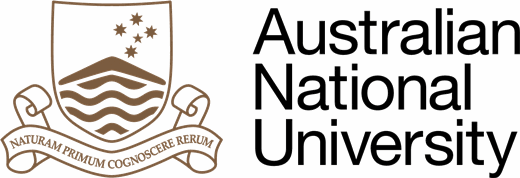 The Australian National University (ANU) is a national examination college situated in Canberra, the capital of Australia. Its fundamental grounds in Acton incorporates seven educating and research schools, notwithstanding a few national foundations and establishments.
The Australian National University (ANU) is a national examination college situated in Canberra, the capital of Australia. Its fundamental grounds in Acton incorporates seven educating and research schools, notwithstanding a few national foundations and establishments.
Established in 1946, it is the main college to have been made by the Parliament of Australia. Initially a postgraduate examination college, ANU started undergrad educating in 1960 when it coordinated the Canberra University College, which had been set up in 1929 as a grounds of the University of Melbourne. ANU enlists 10,052 undergrad and 10,840 postgraduate understudies and utilizes 3,753 staff. The college's enrichment remained at A$1.13 billion in 2012.
ANU is reliably positioned among the world's top colleges. ANU is positioned corresponding nineteenth on the planet (first in Australia) with King's College London by the 2015/16 QS World University Rankings, and 52nd on the planet (second in Australia) by the 2015/16 Times Higher Education. ANU was named the world's 25th (first in Australia) most worldwide college in a recent report by Times Higher Education. In the 2015 Times Higher Education Global Employability University Ranking, a yearly positioning of college graduates' employability, ANU was positioned 32nd on the planet (first in Australia). ANU is positioned 89th (first in Australia) in the 2015 CWTS Leiden positioning. ANU is positioned first in the 4 Palmes classification in the Eduniversal positioning.
ANU considers six Nobel laureates as a part of its staff and graduated class. The college has taught two executives, 30 current Australian Ambassadors and more than twelve current heads of Government divisions of Australia. Understudies entering ANU in 2013 had a middle Australian Tertiary Admission Rank of 93, the equivalent most elevated among Australian colleges.
History
Requires the foundation of a national college in Australia started as ahead of schedule as 1900. After the area of the country's capital, Canberra, was resolved in 1908, area was put aside for the college at the foot Black Mountain in the city outlines by Walter Burley Griffin. Making arrangements for the college was disturbed by World War II however continued with the production of the Department of Post-War Reconstruction in 1942, eventually prompting the entry of the Australian National University Act 1946 by the Parliament of Australia on 1 August 1946.
A gathering of famous Australian researchers came back from abroad to join the college, including Sir Howard Florey (co-designer of therapeutic penicillin), Sir Mark Oliphant (an atomic physicist who dealt with the Manhattan Project), Sir Keith Hancock (the Chichele Professor of Economic History at Oxford) and Sir Raymond Firth (an educator of humanities at LSE). Market analyst Sir Douglas Copland was designated as ANU's first Vice-Chancellor and previous Prime Minister Stanley Bruce served as the primary Chancellor. ANU was initially sorted out into four focuses—the Research Schools of Physical Sciences, Social Sciences and Pacific Studies and the John Curtin School of Medical Research.
The main inhabitant's lobby, University House, was opened in 1954 for employees and postgraduate understudies. Mount Stromlo Observatory, set up by the government in 1924, turned out to be a piece of ANU in 1957. The main areas of the ANU Library, the Menzies and Chifley structures, opened in 1963. The Australian Forestry School, situated in Canberra since 1927, was amalgamated by ANU in 1965.
Canberra University College (CUC) was the primary organization of advanced education in the national capital, having been set up in 1929 and selecting its first undergrad understudies in 1930. Its establishing was driven by Sir Robert Garran, one of the drafters of the Australian Constitution and the main Solicitor-General of Australia. CUC was associated with the University of Melbourne and its degrees were allowed by that college. Scholastic pioneers at CUC included antiquarian Manning Clark, political researcher Finlay Crisp, artist A. D. Trust and financial specialist Heinz Arndt.
In 1960, CUC was incorporated into ANU as the School of General Studies, at first with resources in expressions, financial matters, law and science. Resources in Oriental studies and building were presented later. Bruce Hall, the main private school for students, opened in 1961.

0 comments:
Post a Comment